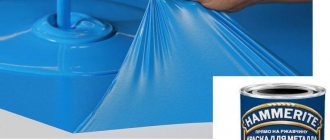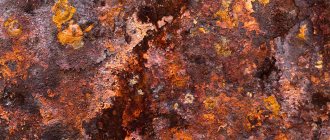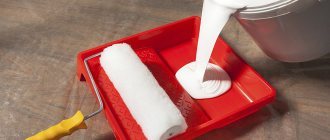The low quality of public services can be noticed simply by opening the water tap in the apartment. Often something cloudy and yellowish pours out from there, vaguely resembling clean water. In this case, owners of country cottages need to rely on themselves, since centralized water supply is not yet available everywhere. Water from an artesian well is usually of very good quality. However, there are numerous cases when water produced on your own property cannot be drunk. The water flows rusty, or after a short period of time begins to turn yellow. Drinking such water is harmful to health, as it contains various dangerous impurities. Here you can find comprehensive water purification systems for a country house.
Why does the water in the well turn red (yellow)?
There are several reasons why water from a well turns yellow/red. These can be rusty communications, and impurities from clay and sand, and dissolved tannin and humic acids, and the main one is the presence of iron. It can be of divalent or trivalent form and causes yellowness under the following conditions:
- In contact with air;
- When heated;
- Due to other reasons.
What causes well water to turn yellow when exposed to air?
Passing through geological rocks saturated with iron ore, the water receives dissolved iron, which, once on the surface, is oxidized by atmospheric oxygen and gives a reddish tint to the water. Since dissolved iron is initially not visible (the water is transparent), its presence is checked as follows: the liquid in a transparent vessel is left in the sun. If after a few hours the water from the well turns yellow and sediment appears, it contains iron. Also, water may turn red when in contact with air, which also indicates a high concentration of iron ions.
Well water turns yellow after heat treatment: what to do
If previously clear water turns yellow when boiled, it most likely has a high concentration of iron and manganese. Another cause of yellowing may be a chemical reaction between lime deposits and ferric iron. The result is a liquid from which water heating devices (dryers, washing machines, dishwashers, boilers and showers) fail, and rust stains remain on the laundry after washing.
Other causes of rusty (yellow) water in a well
One of the reasons for yellow well water is the contact of salt in the water softening filter with tannin. Passing through peat bogs, the water is actively saturated with humic acids/tannin, which also color it yellow. This is another common cause of yellow water. Another is silting of the bottom of the well or clay and sand getting into the pipe. Other reasons include the presence of manganese in the water. The difference is the color of the water. Water with manganese after a well turns black and has an unpleasant odor. It is not suitable for consumption. Also, due to the presence of silt, sand and iron, the water in the well may be cloudy and have an unpleasant swampy smell.
Answers from experts
Vedara:
I’m interested in reading the answers) ) I have this at work.. I pour it, it’s crystal clear, a tear.. and they boiled it... yellow (((
GREAT CORN:
Maybe the pan is rusty?)
E.S.:
High content of iron compounds.
Olga Oleynik (Maletina):
High iron content. When interacting with oxygen, iron forms an insoluble form and forms rust.
Roman Panteleev:
Possibly due to high iron content. Use a special filter for water with a high Fe content.
Pechkin:
Why guess on coffee grounds? Whoever drilled the well was required to conduct a water analysis. If you screwed up, take it yourself to the nearest water supply system laboratory. Only the water should be fresh for no more than a day
Vladimir Petrov:
Try to pump the well and have the water tested, they will tell you everything. They will perform a full water analysis and make recommendations.
Andrey Ponomarev:
When boiling, water-soluble forms of iron become insoluble - a precipitate (suspension) forms. Pump the well
Alex Mishin:
Whatever water is available in your area is what you will have to use. Or use imported water, and this is only for washing and watering. At the dacha we carry drinking water from a spring, and at home (a village in the near Moscow region) we carry it in bottles from work from the tap; the water in Moskovsky Vodoprovod is good. I don’t want to buy “bottled water” (the level of literacy of manufacturers is amazing!): otvet.mail /answer/96566837 In your case, it is very likely that the water has a high iron content, and when boiled it gives a colloid of ferric hydroxide - Fe(OH )3. A “home remedy” for removing iron from water is to pour it into a plastic barrel through a shower head and let the rust flakes settle. Water analysis (chemical and biological) to determine its suitability for drinking is officially carried out at the Rospotrebnadzor Centers - previously they were called Sanitary and Epidemiological Stations. Drillers are not required to do this.
Nikolay Potafeyev:
Pump the well, there will be no problems.
◄non-GMO►:
iron - yes. But it is also possible that there is an excess of manganese; when boiling, the water also darkens. Take it to the laboratory for analysis, it costs about 2 thousand rubles.
Lesya:
Don't even think about drinking it.
…….:
We had the same thing. I had to install a filter. Iron exceeded the norm by 10 times, and manganese by 6 times (((
What effect does rusty well water have on health?
Yellow, red or dark water has a negative impact on our lives. It is unlikely that anyone will want to drink such water. In addition to the unpleasant sensations from drinking muddy water, various impurities have a negative effect on the entire human body. Thus, untreated water can form sand and kidney stones, which disrupts metabolism and leads to kidney failure. Elevated iron levels change the composition of the blood, and this entails liver disease and changes in skin tone. Yellow water also negatively affects the cardiovascular system.
Often, yellow water, in addition to the unpleasant taste and smell, contains pathogenic bacteria that cause various diseases. You can’t not only drink it, but also cook with it. Otherwise, you can expect things like:
- food or bacterial poisoning;
- vomiting or upset stool;
- allergic reactions.
If you have rusty water from a well, doctors do not recommend not only drinking, but even washing with such water. Read more about the dangers of water with a high concentration of iron here.
Best answers
Shangrin:
1.buy 2 liters of Sprite 2.pour into a kettle 3.boil a couple of times
Sergey Kurbanov:
It can be cleaned. Only then I advise you to pass the water through a filter. At least the most ordinary “Geyser”. It filters rust very well. And then just clean the cartridge.
Mister_X:
There is no difference between an electric kettle and a gas stove. Apparently your water is bad. Use a water filter before boiling and cooking.
Olga Oleynik (Maletina):
Leave the water to settle if there is no filter. The kettle can be cleaned with citric acid or lemon peels can be thrown into the kettle and boiled.
gerta521:
Use lemon to remove scale.
Zinaida:
Rust stains water. Donate your kettle to a museum and buy a new one.
uncle Ivan:
Pour half a glass of 9% vinegar essence into the kettle, add water and boil twice. The teapot will shine. No filters will help. Water hardness is reduced only by a special softener filter filled with cation exchange resin granules. Such filters are not available for household purposes.
How to get rid of rusty water in a well
“How to clean rusty water that flows from a well?” - the most common question among residents of our country. There are several ways to deal with yellow water from a well. Among them is the treatment of water with chemicals directly in the well. This is risky, as it is fraught with incorrect calculation of the dose of reagents, which can spoil the quality of water for a long time. A simpler method to clean rusty water from a well is to let the water settle before drinking. This requires a large capacity and a long time. You can also reduce the access of oxygen to the well. In this case, a head with a sealed container is constructed.
The most common method of purifying yellow or dark water is filtration. Let's look at some popular options.
Mechanical filters against rusty water for wells
In a shallow well, mainly of the sand type, to pre-clean water from suspended matter, install a mesh or disk filter (preferably made of stainless steel). It purifies water from large particles of impurities even before the pump, which allows you to extend its service life. There are filter models with an automatic washing option. If the well has a clay bottom, it is recommended to install a bag-type filter. In this case, some of the impurities are retained outside, and the remaining ones settle on the walls. Water is supplied from the inside to the outside through a container filled with either fine sand, crushed expanded clay, or other granules. There are options for coarse and fine cleaning.
Rusty water from a well: iron removal filters + aeration
If dissolved divalent iron predominates in the water, due to which the water from the well turns yellow after some time, then iron removal filters are used in combination with aeration units. This is one of the most common methods that helps solve the problem if the water from the well is yellow. This is explained by its simplicity and low price of equipment. It is classified as reagent-free. Efficiency and the absence of the need to periodically purchase chemicals are advantageously complemented by the almost complete autonomy of the process of cleaning the fluid produced by the well.
The first stage of filtration consists of a compressor pumping air into a container into which artesian water is supplied. Oxygen converts divalent iron into a new trivalent insoluble form (the water turns yellow and the oxidized iron precipitates). The rust particles formed after this settle in iron removal filters and are filtered out there. For reliable operation of the filter, it is necessary to periodically change the load and rinse the container with running water.
Sediment filters for turbidity and rust
One of the simplest technologies is considered to be the sedimentary method of purifying raised water from impurities of undissolved iron. Water clarification occurs by removing insoluble impurities. The column is filled with a filter medium (sand, expanded clay, hydroanthracite, etc.) through which the water to be purified is passed. An undoubted advantage is the self-cleaning of the installation. A switchable control valve directs a reverse flow of water into the filter, which washes accumulated contaminants into the drain.
Ion exchange filters will help if the water from the well rusts
A relatively expensive and complex method of purifying water from dissolved iron is the use of synthetic resins such as Ecotar or Ecomix in filters. This method of using a multicomponent resin not only effectively removes high concentrations of iron from the liquid being purified, but also frees it from hardness salts, that is, it simultaneously softens the water. If both divalent iron and its trivalent form (dissolved and undissolved) are present in the water at the same time, then the filter loading needs to be changed more often, since the initial degree of contamination is higher.
Carbon filters for rusty water in a well
Carbon filters are designed to purify water from chlorine and its compounds, organic matter, unusual tastes and odors. At the same time, individual stationary and cartridge filters with carbon cartridges are capable of purifying artesian water from insoluble impurities, solid particles, bacteria and hardness salts.
How to purify rusty water in a well using ultraviolet sterilizers
Natural water (from a well or a borehole) is highly likely to contain harmful microorganisms. The chlorination method previously used to disinfect water will soon completely fall out of use. Instead, disinfection with ultraviolet lamps is used. They clean extracted water from fungi, viruses, etc. with very high efficiency (up to 99.99%). microorganisms.
At the same time, cottage owners do not need to replenish expended chemical reagents, and the smell of “bleach” is not added to the water. The ultraviolet disinfectant is very easy to install and can operate automatically.
Household osmosis is an excellent solution if the well has red water
An effective but costly way to purify yellow water from a well from various types of impurities is the method of household reverse osmosis. It belongs to the group of membrane methods, since the main cleaning element in the filter device is a semi-permeable membrane. It cuts off all substances whose molecules are larger in size than a water molecule. Household installations can be installed for the entire house or under the sink for one drinking tap. For the normal functioning of the installation for the whole house, it requires constant maintenance and water pressure maintained by the pump. You can also install reverse osmosis throughout your entire home.
Why is high iron levels dangerous?
Exceeding the permissible norm of this element is fraught with the following consequences:
- may cause allergic reactions;
- causes digestive tract upset;
- quickly disables the water supply system - deposits accumulate on the walls of the pipes;
- has a detrimental effect on household appliances, such as washing machines;
- plumbing also breaks down quickly.
Rusty water in a well is a rather unpleasant phenomenon that can cause significant harm. Therefore, at the first signs, you need to take a sample for analysis and select a suitable cleaning system.
We know what to do if rusty water comes from a well
If artesian water shows signs of deterioration in quality, it is necessary to determine the cause of this phenomenon. Doctors do NOT recommend drinking yellow water or using it for domestic purposes. The consequences of this can significantly worsen the health of all family members. You need to purchase and install a suitable water purification system to remove iron from a well.
Our specialists can help you select the right filtration system based on your specific situation. They will also help you buy filters for purifying yellow water from a well, which will be most beneficial for any budget. Just call us 8-499-391-39-59 or leave a request by mail
Causes of unpleasant odor
The unpleasant smell of water from a well is a sign of the vital activity of microorganisms.
The main reason for the appearance of a swamp stench from water is the decomposition of organic substances in it, their rotting. The above substances get there in this way:
- Together with particles of sand seeping into the casing. When the bottom of the source becomes silted, the growth of organic matter in the water increases.
- Through the unprotected top of the well/well. Small debris, insects, small fauna (bats, birds) may well get into the column.
- Low intensity of source exploitation. Stagnation of water in it leads to the formation of a layer of silt on the bottom. This can cause a swamp stench.
In all three cases, processes occur in the lower layers of the well in which anaerobic (living without oxygen) bacteria actively develop. They provoke the appearance of a swamp smell.
This liquid foams a lot when boiled.











